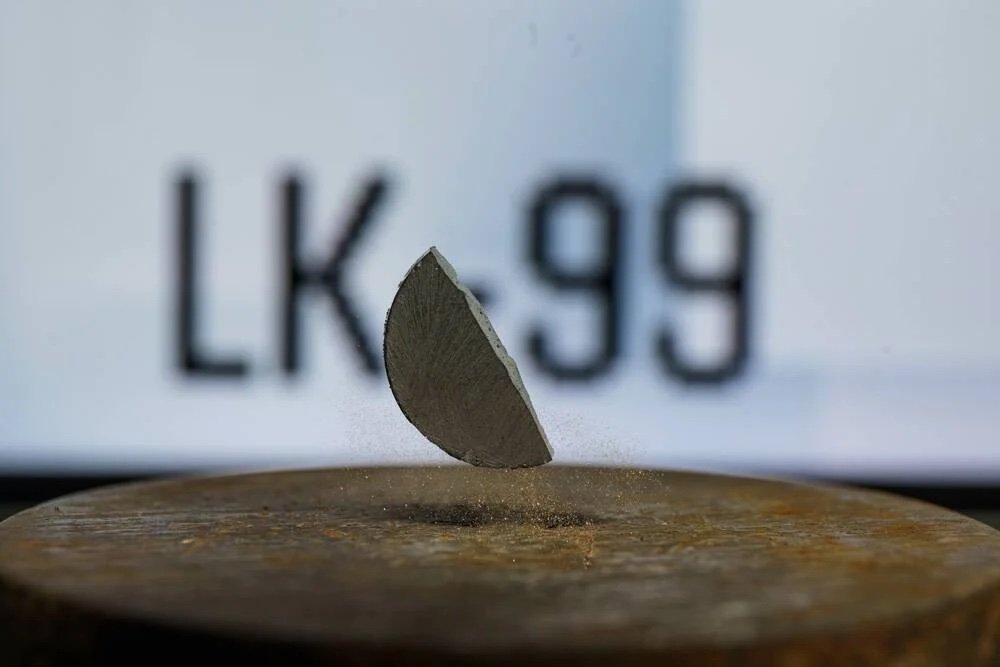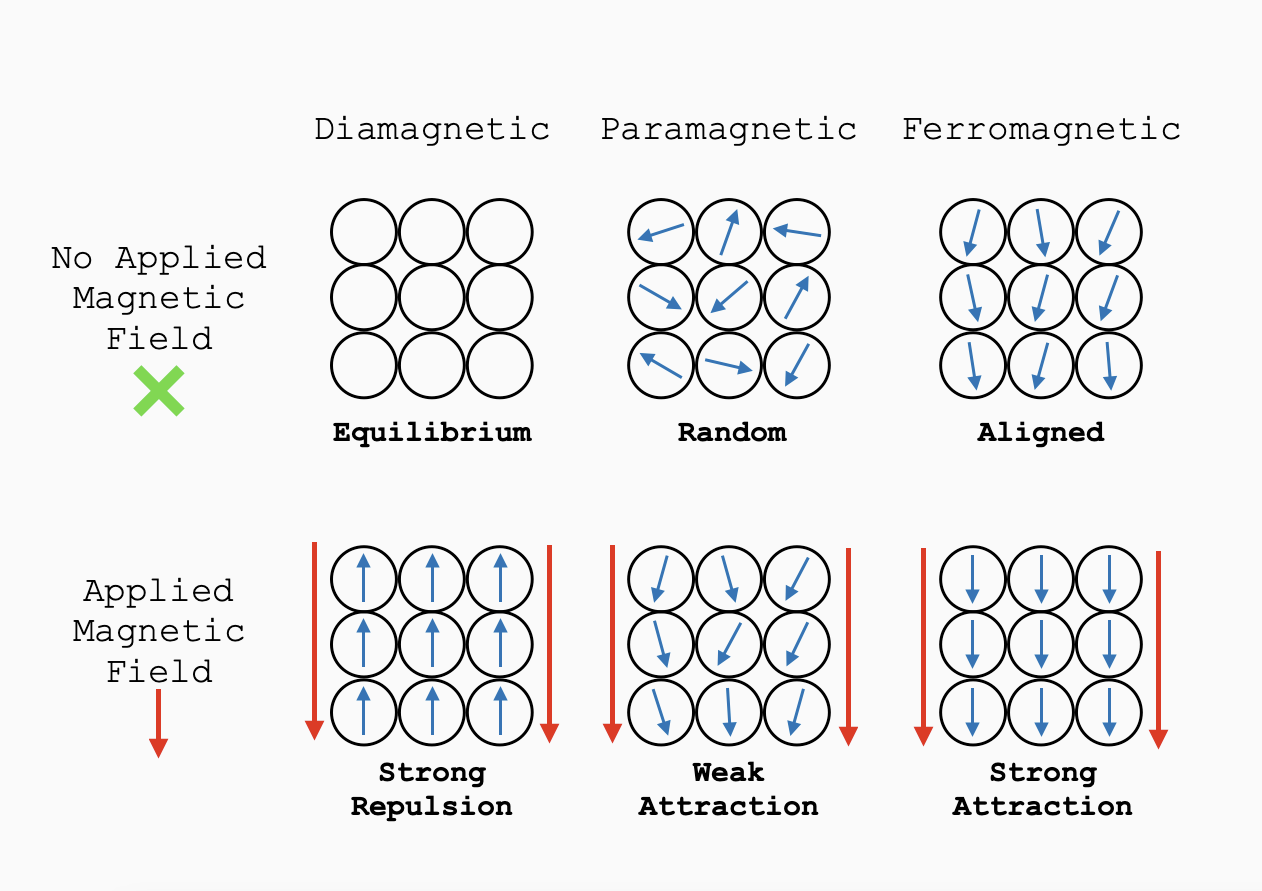The LK-99 Saga: Superconductor not Super-Convincing
Science & Technology - 10 Minute Read
An Overview
The LK-99 compound shook the world after its superconductive nature was publicised by Korea University scientists, Lee Sukbae and Kim Ji-Hoon, after whom the material is named. Instantly, the potential of this strange lead-oxyapatite compound was projected to be immense to the world of science. That is, if the results were accurate.
However, before we dive into the saga that unfolded between late-July and early-August this year, it would be reasonable to question, what exactly is a superconductor? Or more to the point, why is there such excitement around discovering one that works at room-temperature?
First and foremost, it should be made clear that just the fact that this LK-99 material is superconductive is not what’s raised the eyebrows of scientists around the world. Various materials, including the common aluminium and mercury, have superconductive properties, but only at extremely low temperatures. Instead, the proposition that LK-99 can maintain superconductivity at room temperature is what’s raising those scientific eyebrows.
But why? To answer that, we shall begin by exploring what a superconductor is, and why the LK-99’s alleged properties made it not only unique, but possibly world-changing.
What is a Superconductor?
In short, a superconductor is a material that permits the flow of electricity without incurring any resistance whatsoever. Regular conductivity on the other hand, is a much more familiar property found in many common materials, also enables the flow of electricity but provides resistance to some degree, hence resulting in the loss of energy.
One can picture this resistance and energy loss as electrons passing through an object like a ball in a pinball machine; the electron clatters against each of the bumps and obstacles before finally making it through to its destination. However, instead of gaining lucrative arcade points with every collision, energy is lost every time the electrons are obstructed from being transferred through. Although most of the energy is preserved in good conductors which have few, but crucially never zero, obstacles, some energy is always lost.
A superconductor offers the appealing situation where the electrons passing through do not have any obstacles or bumps to face, with the internal structure of a superconductor being neatly organised into equilibrium, like a pinball machine without any pins. If you’re following this analogy you may be able to then understand that the significance of a superconductor is that unlike regular conductors, it offers zero resistance and therefore, is extremely efficient.
Superconductors can be imagined as pinball machines without any pins, allowing the electrons to pass through without any obstacles causing a loss of energy.
Image Source: https://www.thoughtco.com/history-of-pinball-1992320
The caveat to all of the superconductive materials we have discovered thus far is that they only attain this promising attribute when they are cooled beneath their own “critical temperature.” Unfortunately, these are agonisingly low, nearing Absolute Zero for aluminium and mercury and requiring temperatures colder than the -270ºC(-454ºF) of outer space.
But, if we could find, or more likely create, a substance that had a critical temperature near or even above room temperature, the possibilities for science and engineering would be phenomenal.
For starters, just through the zero-resistance of hypothetical room-temperature superconductors, the 15% of energy that is lost through electrical transmission over power lines would be nullified and renewable energy sources such as nuclear fission would become significantly more efficient.
Furthermore, another key property of superconductors is something called diamagnetism, a phenomenon where a magnetic material strongly repels a magnetic field rather than being weakly attracted to one pole of the magnetic field. This weak attraction is common amongst materials that we encounter in our daily lives and is known as paramagnetism. There is also another magnetic property, ferromagnetism, where an object is strongly attracted to both poles of a magnetic field. This quality is quite uncommon in everyday materials but plays a key role in the story of the LK-99 substance.
With the diamagnetism and “resistance-lessness” of superconductors, areas of science including MRI scans, computer chips and particle colliders can be made substantially more efficient, safe and mass-producible. Another science-fiction-esque outcome of superconductors is the prospect of magnetic-levitation trains(Maglevs), that reach speeds up to 200% faster than the average passenger carriage today.
The chart above shows the differences between diamagnetism, paramagnetism and ferromagnetism, the first of the three being a highly sought-after property in materials that will enable them to reduce energy losses and drastically increase efficiency.
© Kabeer Hans, 2023
Now that we’ve established the properties and massive potentials of room-temperature superconductors, let’s return to the curious case of the LK-99 material that offered up awe-inspiring possibilities that could reform the inner workings of our world. Or at least it did before it was debunked the following week.
The Superconductor Scandals
Lee Sukbae and Kim Ji-Hoon released their findings on the LK-99 compound, claiming they had found evidence proving that the substance sustained superconductivity at temperatures as high as 127ºC, let alone at room temperature.
The astronomical propositions of this strange substance was met with inherent resistance by scientists across the globe and work was swiftly underway into verifying the veracity of these claims.
The suspicions of the scientific community were justified given the situation that had unfolded just months prior to the LK-99 saga: the controversy of professor Ranga Dias at the University of Rochester.
Ranga P. Dias and his fellow co-authors published a paper in March of this year claiming to have found a room-temperature superconductor of their own. However, earlier this week, Dias and his team retracted their paper after the onslaught of immediate scrutiny it received from the scientific community.
With nine out of the ten co-authors agreeing with the retraction, Dias himself was the only opposer, investigation has commenced into the nature of Dias’ previous works, including his PhD thesis, in search of the falsification and fabrication of data.
Individuals at the University Burgundy Franche-Comté teamed up with journalists at Science Magazine to deep-dive into Dias’s PhD thesis and found that up to 21% of the paper, 6300 words, was identical to works from 17 other sources.
However, the reason behind the immediate defiance to Dias’s superconductor findings this year was not because of his PhD plagiarism(which was only uncovered after his alleged discovery), but because one year earlier, Dias had claimed to have found a different room-temperature superconductor. That former paper had, too, been retracted under allegations of data manipulation.
Ranga P. Dias of the University of Rochester has his PhD thesis under investigation following this week’s retraction of his second paper on room-temperature superconductors within a calendar year.
Image Source: https://www.science.org/content/article/plagiarism-allegations-pursue-physicist-behind-stunning-superconductivity-claims
The LK-99 Debunking
With Ranga Dias’s PhD now in serious danger of being revoked, it is clear that many are eager to be the first to discover a room temperature superconductor as its discovery would be revered in equal significance to the invention of the light bulb with the possibilities it would open for the world of engineering.
Unfortunately, the claims of the LK-99 superconductor are nearing a similar fate to those of Dias’s earlier this year. Further investigation and experimentation from scientists across the globe have all but debunked the material’s superconductivity.
In response to the criticism, Kim Ji-Hoon released a video exclusively to the New York Times depicting a small chunk of the LK-99 material levitating above a magnetic disk with a device in the background recording the temperature at 25.8ºC. This was supposedly proof of the material’s diamagentism.
Kim Ji-Hoon sent exclusive video footage to the New York Times as an attempt to prove the diamagnetism of the LK-99 substance.
Video Source: https://www.nytimes.com/2023/08/03/science/lk-99-superconductor-ambient.html
Although this did reignite the internet’s interest in the LK-99, professors at Princeton, the Max Planck Institute and Beijing University soon all released papers in agreement over the lack of superconductivity and diamagnetism. In fact, to further rub salt into the wounds, some of the results from the Condensed Matter Theory Centre at the University of Maryland suggested that the LK-99 was highly resistant and a billion times less energy-efficient than copper.
This may seem like a comically exaggerated figure but it complies with the discovery of professors at the Hong Kong University, who claimed that the substance was not diamagnetic but instead ferromagnetic. This meant, as aforementioned, that the substance was strongly attracted to both ends of a magnetic field rather than being strongly repelled.
Conclusion
In conclusion, the saga of the LK-99 superconductor raised the hopes of many across the world with the incredible possibilities it offered but its thorough debunking in the last few weeks has extinguished any excitement over the strange material. Despite the unfortunate outcome, the LK-99 news made many people aware of the significance of a room-temperature superconductor and perhaps now, with the raised intrigue over the subject, a legitimate discovery is imminent.
Bibliography
Calma, Justine. “Is That Viral “Superconductor” Legit?” The Verge, 10 Aug. 2023, www.theverge.com/2023/8/10/23827216/superconductor-lk-99-research-findings. Accessed 20 Aug. 2023.
Chang, Kenneth. “LK-99 Is the Superconductor of the Summer.” The New York Times, 3 Aug. 2023, www.nytimes.com/2023/08/03/science/lk-99-superconductor-ambient.html.
CHINT Global. “How Much Power Loss in Transmission Lines | CHINT Blog.” How Much Power Loss in Transmission Lines, 29 Aug. 2021, chintglobal.com/blog/how-much-power-loss-in-transmission-lines/#:~:text=Different%20power%20is%20lost%20at%20different%20stages&text=So%2C%20the%20average%20loss%20of.
Guo, Kaizhen, et al. “Ferromagnetic Half Levitation of LK-99-like Synthetic Samples.” ArXiv.org, 15 Aug. 2023, arxiv.org/abs/2308.03110. Accessed 20 Aug. 2023.
JRPass. “Shinkansen: Japanese Bullet and Maglev Trains.” JRPass.com, www.jrpass.com/blog/shinkansen-japanese-bullet-and-maglev-trains#:~:text=While%20bullet%20trains%20travel%20at. Accessed 20 Aug. 2023.
Penn State University. “6.8: Ferro-, Ferri- and Antiferromagnetism.” Chemistry LibreTexts, 13 Sept. 2019, chem.libretexts.org/Bookshelves/Inorganic_Chemistry/Book%3A_Introduction_to_Inorganic_Chemistry_%28Wikibook%29/06%3A_Metals_and_Alloys-_Structure_Bonding_Electronic_and_Magnetic_Properties/6.08%3A_Ferro-_Ferri-_and_Antiferromagnetism.



